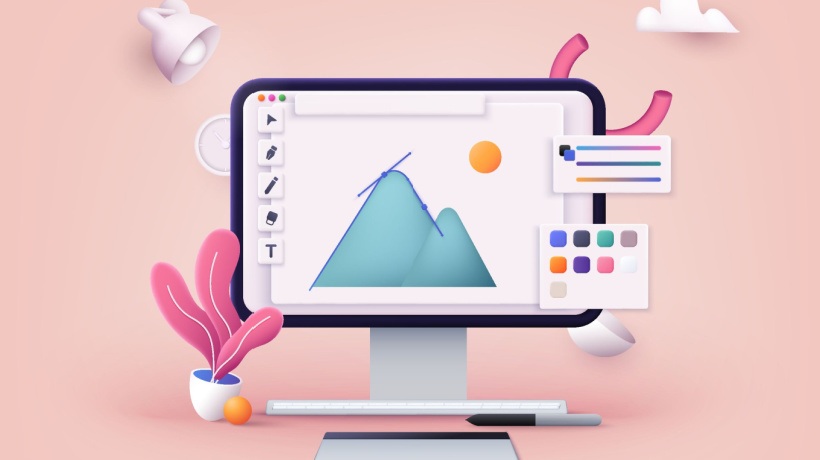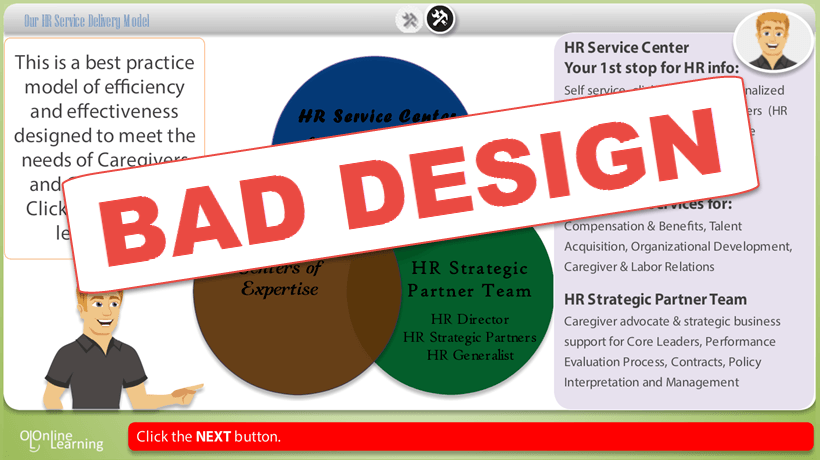Visual Vs. Instructional Design: Which One Is More Important?
What is the first thing you do when you start designing a new eLearning course? What makes you feel like the course you designed is the best for your learners? Is it the easy navigation or is it the compelling graphics that accompany your texts? In other words, what is more important for you: The Instructional Design, or the Visual Design?
The answer is simple. Both. When creating an eLearning course, you can not give more emphasis to just one of the two factors. The main reason is that a disfunctional Instructional Design will not be improved with visuals, as well as poorly crafted graphics will distract students from paying attention and prevent them from being actively involved in the course. But what is Instructional Design and what makes it different from Visual Design?
Why Instructional Design Is Important
To start with, according to the Institute of Electrical and Electronics Engineers, Instructional Design "is the process through which an educator determines the best teaching methods for specific learners in a specific context, attempting to obtain a specific goal". This means that Instructional Designers must, first, consider the learners that will attend the course and their needs, when creating a new course. Who will be your potential learners? What prerequisite knowledge and skills do they must have? What are your learning goals? What skills will your learners gain from your course? Having such questions in mind, they must find and use the appropriate teaching methods that apply to those needs in order the desired objectives to be achieved.
A similar definition has been drafted from Horton, according to whom "Instructional Design contributes theories about how human beings learn, strategies for applying these theories, and methodologies to carry out the strategies". As you can see, these three factors, theories, strategies and methodologies, are linked together in a recurring cycle that keeps changing, as new theories emerge, creating the need for new strategies and methodologies.
However, Instructional Design focuses mainly on the learning goals and the ways in which they can be achieved. But learning theories highlight the ways in which knowledge is absorbed, processed, and retained during learning. And here exactly lies the role of Visual Design.
Why Visual Design Is Important
Text, sounds, graphics, video, and animations are used to make more enchanced and interactive courses, that activate all the sensory channels of learners, making it easier for them to understand concepts. But there is more. Visual Design is not only about the use of media. Visual Design is also about the user experience and the way the learner navigates in a course. It is about interaction. Speaking in scientific terms, the above is defined as User Interface Design, or else UI. The User Interface Design, when it comes to eLearning, determines the usefullness and effectiveness of an eLearning course. If the User Interface Design is based on simple but efficient interactions with the user, then it will be easier for the learning goals to be accomplished. In other words, the User Interface Design exploits controls, navigation buttons, layouts and other elements, framed by the appropriate graphics and visuals, that facilitate the actions of the user.
That, as a result, leads to the importance of the User Experience Design, or else UX, which is, as found on Wikipedia, "the process of enhancing customer satisfaction and loyalty by improving the usability, ease of use, and pleasure provided in the interaction between the customer and the product". In our case, the product here is the eLearning course. If the learners can find easily the information needed in a course, they feel satisfied, while on the other hand, if they have a hard time searching or gets bombarded with irrelevant media, they feel irritated and usually give up the learning process.
Why Both Are Equally Important
So, what must you do, to keep your learners motivated? You must merge both the Instructional and the Visual Design in order to create effective eLearning courses that provide a positive experience to the user. How can you do that? Research. There are many different practices available that help you deliver effective eLearning courses. Technology changes rapidly and creates increasing demands when it comes to eLearning. Instructional Design techniques that used to be effective last year, may have no use in a new course. The same applies to Instructional Design theories. You must always choose the one that meets your learners needs.
To conclude, knowing your learners needs and your learning goals, having full knowledge of the course's subject, as well as us applying both the Instructional Design and the Visual Design principles ensuring instructional and visual integrity, then and only then you can deliver effective eLearning courses that have the best outcome for your learners and help them gain a meaningful experience.









